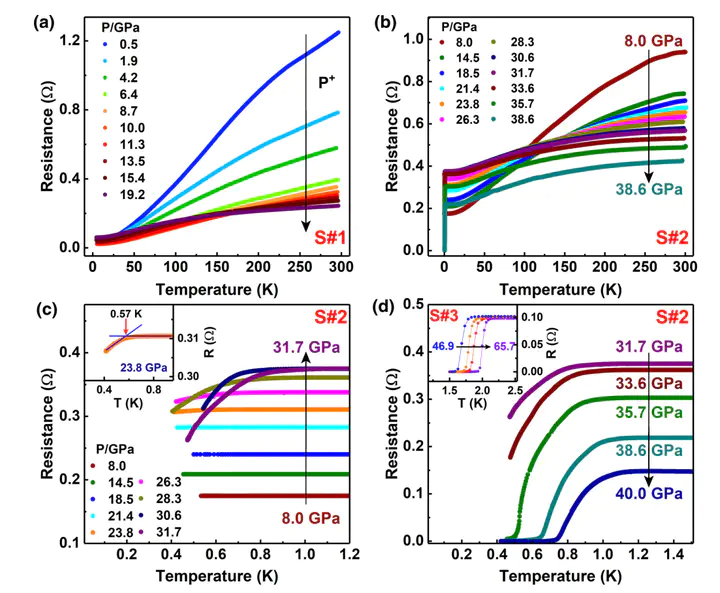
Abstract
We report the observation of superconductivity in the pressurized type-II Weyl semimetal (WSM) candidate TaIrTe4 by means of complementary high-pressure transport and synchrotron x-ray diffraction measurements. We find that TaIrTe4 shows superconductivity with transition temperature (TC ) of 0.57 K at the pressure of ∼23.8 GPa. Then, the TC value increases with pressure and reaches ∼2.1 K at 65.7 GPa. In situ high-pressure Hall coefficient (RH ) measurements at low temperatures demonstrate that the positive RH increases with pressure until the critical pressure of the superconducting transition is reached, but starts to decrease upon further increasing pressure. Above the critical pressure, the positive magnetoresistance effect disappears simultaneously. Our high-pressure x-ray diffraction measurements reveal that at around the critical pressure, the lattice of the TaIrTe4 sample is distorted and its volume is reduced by ∼19.2 %, the value of which is predicted to result in the change of the electronic structure significantly. We propose that the pressure-induced distortion in TaIrTe4 is responsible for the change of topology of the Fermi surface, and such a change favors the emergence of superconductivity. Our results reveal the correlation among the lattice distortion, topological physics, and superconductivity in the WSM, a hot topic in condensed-matter physics.